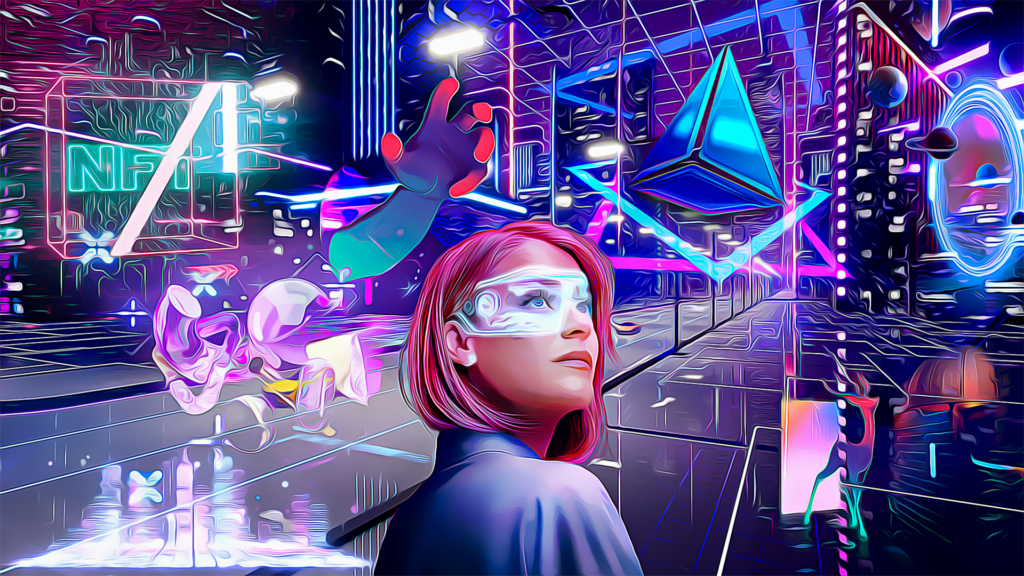What is the Metaweb and Why Do We Need It?

In response to the recent trend-shifting developments and changes to global health, financial, and information network culture, it is critical that we as a collective consciousness must realize how important it is to set higher standards for new, innovative web services. It is imperative that we must not overlook the dangers of centralized networks and social media applications, which have the potential to obscure and manipulate information that is vital for the good of all.
On one hand, exciting immersive technologies such as virtual reality (VR), augmented reality (AR), and enticing creative expression tools that allow us to produce entertainment content with hyper-realism as the means of mainstream media interaction are steadily emerging, whether one prefers them or not.
With the advent of advanced content immersion technologies, the evident threat of corruption in essential information distribution networks, and the legitimate technical limitations that challenge the delivery of a fully decentralized internet experience, we can conclude a question that states: How can we maintain the benefits of decentralization while retaining the ecstasy that immersive entertainment technologies offer?
The Acent team has made available a moderate utilitarian approach to network decentralization policies enforced with smart contract deployment systems while taking full advantage of performance-driven tools for captivating the visual, auditory, and kinesthetic standards of today’s web audience. This is in response to consumer base demands that are needed in social media platforms and lucrative entertainment content delivery systems for scalability and expansion.
The need for a new immersive, captivating web infrastructure that can enforce essential benefits of Web3 such as transparent distributed governance policy systems is imminent. Accordingly, we are defining the term “metaweb” as the immersive, decentralized, gamified infrastructure layer 1 network for social media and entertainment content interaction. As per the aforementioned factors, the following criteria must be met for a network to fall within the category of a metaweb service for users to enjoy its benefits while guaranteeing their safety:
- must have a DAO (Decentralized Autonomous Organization) based governance where the ability to propose and vote on major policies and feature enhancements should be enforced by a publicly verifiable blockchain;
- must be able to render high-end graphical features such as hyper-realistic graphics, AR, and VR support to allow metasites and meta-applications to be rendered and experienced with immersion;
- has a unique metaweb domain name system support such as MRL that is recognizable, searchable, connectable, reachable, and teleportable through a web 3.0 browser-based product (explained in further detail in subsequent parts of this white paper);
- must allow deployment of 3D object-based websites called meta-sites in a public meta-space where people can interact, connect with each other, perform social media interactions, and engage in business activities;
- should have the ability to assign convenient MRL addresses to 3D object-based public meta-spaces for the public to gain access easily;
- must be capable of supporting enticing real-time dynamic activity-based play-to-earn (P2E) applications that reward users’ efforts in developing good competitive multiplayer skills and strategies rather than roll-the-dice style deterministic, simulated NFT ownership microgames of algorithmic games of chance.
- developer tool agnosticism must be guaranteed and not be limited within the parameters of expression provided by a centralized product developer authority. For instance, a project called “voxel beach” that only allows the community to publish microgames or create NFTs built with a monopolized software tool provided by a centralized “voxel beach” company cannot be considered a metaweb network. In order to avoid the pitfalls of corruption by centralized tech monopolies, developers should have the option to choose their own tools for publishing content, just like the traditional “Steam” business model. Therefore, immersive meta-applications should be able to be built with any tool of choice, such as Unity, WebGL, Godot, and Unreal Engine, as well as Cryengine. This is essential for a business environment to function in the web environment, just like a traditional website does not need permission from Google to embed new features into their site. The public metaweb environment should guarantee and promote the basic rights of self-expression for creativity to flourish at the design level;
- must guarantee various types of privacy settings to be publicly enforced by a DAO;
- must guarantee sovereign ownership of digital assets in the format of NFTs;
- must guarantee the basic rights to privacy within the parameters decided and enforced by the decentralized governance system;
- policies involving content censorship should be proposed, managed, and enforced through a DAO;
- must have a public space for everyone to meet, connect, and interact henceforth defined as a metaspace;
- must not depend on centralized advertising for revenue generation; and
- all source code regarding algorithms that affect data feed prioritization, search engine results, and collection of private data should be fully verifiable and auditable by the community at all times.
Please note that the above criteria and definitions may be optimized and evolve gradually, just as social needs can also evolve evidently through constructive community discussions. This would still also largely depend on the growth process required by the web culture and the average underlying thought of the collective consciousness.


